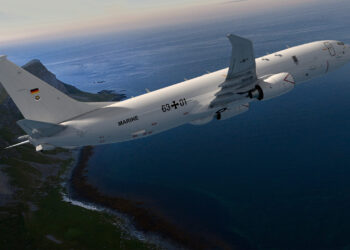,
China is conducting sea trials of the first of five new nuclear-powered submarines armed with longer-range ballistic missiles, according to a US naval intelligence report made public Friday.
The sea trials are part of a broader push by China to check US naval power in the western Pacific with a more modern fleet of nuclear-powered ballistic missile and attack submarines, the Office of Naval Intelligence said.
The first of the new nuclear ballistic missile submarines, designated the Type 094 SSBN, could begin operating as early as 2008, it said.
The submarine “will provide China with a modern and robust sea-based nuclear deterrent force,” the ONI reported.
It will be equipped with the JL-2 sea-launched ballistic missile with range of 8,000 kilometers (5,000 miles), a big gain over China's only other ballistic missile submarine.
|
A Chinese submarine berthed in Hong Kong waters in 2004. US Naval intelligence reports that China is conducting sea trials of the first of five new nuclear-powered submarines armed with longer-range ballistic missiles.(AFP/File/Mike Clarke)
More Military Pictures
|
The XIA SSBN, a 24-year-old nuclear powered vessel, is armed with the JL-1 missile, which has a range of only 1,7770 kilometers (1,000 miles).
Even at that shorter range, the XIA can target US military facilities in the region from launch points inside traditional Chinese operating areas, the report said.
The ONI said China probably will build five of the new ballistic missile submarines “in order to provide more redundancy and capacity for a near-continuous at-sea SSBN presence.”
“Construction and sea trials of the Type 094 program are ongoing,” it said.
The unclassified ONI report, which was obtained by AFP and has a question-and-answer format, was first reported by Sea Power magazine, then picked up by the Washington Times.
It said China also is concluding sea trials of a new Type 093 nuclear powered attack submarine that is expected to be quieter and armed with more advanced weaponry than its predecessor, the HAN SSN class submarines.
It will have anti-ship cruise missiles and more modern torpedoes than the HAN, the report said.
“China has built these features into the Type 093 in an effort to improve the PLA(N)'s (Peoples Liberation Army Navy) to conduct anti-surface warfare at greater ranges from the Chinese coast than its diesel submarine force offers,” it said.
The report said the China's navy currently has about 55 attacks submarines, most of them diesel electric.
It is a smaller but more technologically advanced force than the one China had in the 1980s.
Each of the attack submarines are armed with anti-ship cruise missiles and designed to be quiet enough to operate in the open ocean.
A key focus of China's maritime strategy is to keep outside powers beyond striking range in a Tawan scenario.
“Much of China's military modernization effort of the past five years, and particularly the modernization of the Chinese Navy, has been designed to improve China's anti-carrier capability,” the ONI said.
“China envisions an attack on a carrier strike group as incorporating submarine-launched ASCM (anti-ship cruise missile) strikes and ASBM (anti-ship ballistic missile) strikes,” it said.
It said China is equipping theater ballistic missiles with maneuvering reentry vehicles with radar and infrared seekers to attack a ship at sea.
China has focused on submarines because its surface warfare ships are harder to defend against air or submarine attack, it said.
China's maritime strategy is also aimed at protecting a growing sea trade crucial to its economy, the report said.
“In order to protect oil and other trade routes, the PLA (N) is beginning to develop the foundations of a naval capability that can defend sea lines of communications,” the report said.










